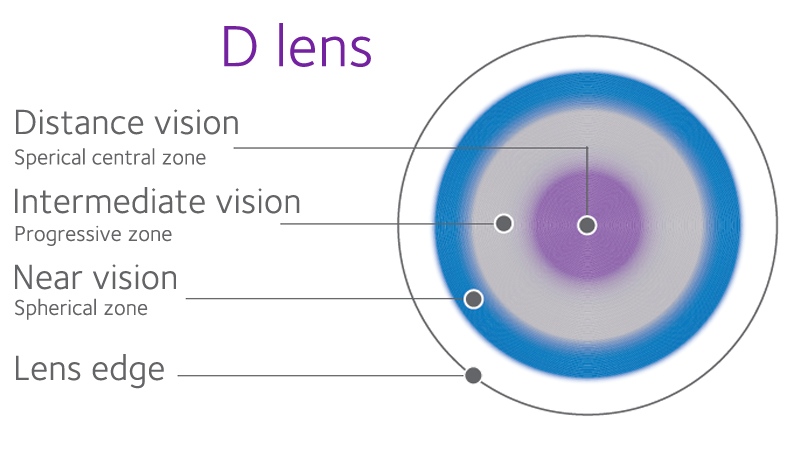Multifocal contact lenses, also known as Varifocal contact lenses, are designed to correct the effects of presbyopia, they do this by using multiple prescription powers in one lens and they work similar to varifocal spectacles to allow you to focus on objects at varying distances.
Whether you are short sighted (Myopic) or longsighted (Hypermetropic), as you age your eyes find it more difficult to focus close up, that’s why so many older people wear reading glasses, but getting old is no reason to give up your contact lenses.
Traditionally, once a contact lens wearer reached about 45 years of age and starts to have problems reading with their contact lenses in, the only option for the Optometrist was to prescribe reading glasses to be worn over the contact lenses - hardly an ideal solution, when the whole point of contact lenses is NOT to wear glasses!
To address this issue, and to provide customers with a convenient way to read with their contact lenses, without having to wear glasses over the top, all of the major contact lens companies like Johnson & Johnson and Alcon put huge amounts of money into the research and development of Multifocal contact lenses.
Manufacturers worked on the innovative technical processes to incorporate two separate powers - distance and reading powers - into ONE contact lens.
The result of all this research was that in 1998 Ciba Vision (now Alcon) were the first to release a daily disposable multifocal contact lens - Focus Daily Progressives -
The research didn’t stop there, manufacturers soon started to incorporate the advanced silicone hydrogel material to bring a wide range of Multifocal contact lenses on to the market, such as Johnson and Johnson’s 1 Day Acuvue Moist Multifocal and Alcons Air Optix Multifocal Plus HydraGlyde.
Unfortunately you cannot just switch to Multifocal contact lenses, they require a specific prescription, they can be more complex to get the powers exactly right, and it is strongly recommended that you have a full sight test and multifocal contact lens trial with your Optometrists before buying these lenses. Even a small error in distance or reading powers can make it difficult to see optimally with multifocal lenses.
You may find that although multifocal contact lenses are as comfortable as your regular contact lenses, you will need to allow a little time to adjust using them, many people take just a few days, others take a couple of weeks and a few people find they can’t adapt to them at all.
You will notice a few differences in your multifocal contact lens prescription compared to your regular prescription, this is because a multifocal contact lens prescription needs to indicate the amount of additional power required, this is normally referred to as the Add power - this can either be a number preceded with a sign, i.e +1.25 or may be indicated as Low, Med or High, you may also see a N or D, this stands for Addition Dominance and is an indication of which eye requires Near and which Dominant powers.
All contact lenses prescriptions require the measurements for
- Sphere - Power of the lens and is preceded by a + or minus depending if you are long sighted or short sighted
- BC - Base curve of the lens
- Dia - Diameter of the lens
A prescription for Multifocal Contact lenses will also include
- Add - the amount of additional power required
And may include
- Dominance - which eye requires near or dominant power
Your Multifocal contact lens prescription will look similar to this, but may differ slightly depending on the brand of contact lens prescribed.






